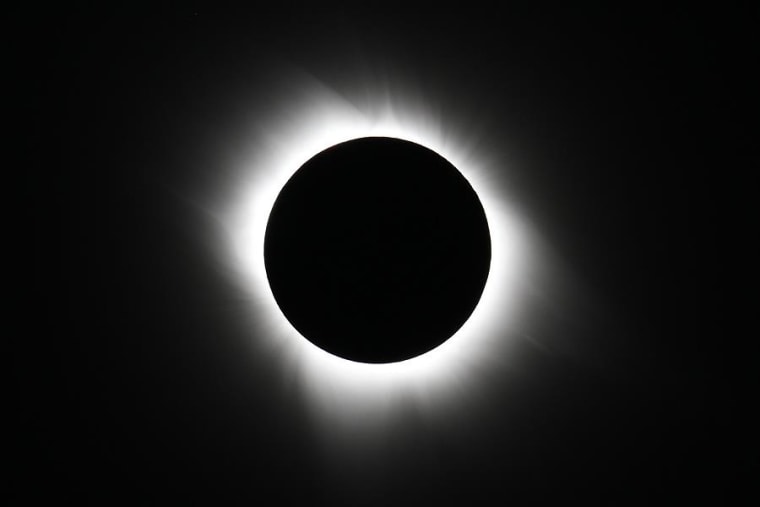This week, the moon will completely cover the disk of the sun, creating a solar eclipse that only a small part of the world can see.
The Friday, March 20 total solar eclipse event will be the first since Nov. 3, 2013. The dark umbral shadow cone of the moon will trace a curved path primarily over the North Atlantic and Arctic Oceans, beginning off the southern tip of Greenland and then winding its way counterclockwise to the northeast, passing between Iceland and the United Kingdom.
The shadow will then pass over the Danish-owned Faroe Islands, the sparsely inhabited Norwegian island group of Svalbard and then it will hook counterclockwise toward the northwest, where it leaves the Earth’s surface just short of the North Pole. [Solar Eclipses: An Observer's Guide (Infographic)]

If you don't have the chance to see the solar eclipse in person, you can catch it live online. The online Slooh Community Observatory will broadcast live views of the solar eclipse through its website Slooh.com, beginning at 4:30 a.m. EDT (0830 GMT).
You can also watch the total solar eclipse webcast on Space.com on March 20, courtesy of Slooh.The Virtual Telescope Project will also air live views of the eclipse through the project's website beginning at 4 a.m. EDT (0800 GMT), and it will also be carried on Space.com if possible.
An artifact of the total eclipse will be a large partial eclipse of the sun that will be visible across all of Europe, northern Africa and much of northern Asia. Depending on where you are in Europe, you will see anywhere from roughly 50 to nearly 99 percent of the sun’s diameter eclipsed by the moon.
You can find local eclipse times for cities in Europe through eclipsewise.com. EclipseWise also has a map of eclipse times in the Atlantic, Africa and Asia.
WARNING:If you're in the eclipse zone, be very careful. Never look directly at the sun without special safety equipment; permanent and serious eye damage could result. You can build a pinhole camera or solar projector with binoculars to safely observe the eclipse.
Editor's Note: Skywatching columnist Joe Rao plans to fly above any clouds on a specially chartered jet that will attempt to rendezvous with the moon’s shadow near the Faroes. Soon after the eclipse is over, check back at Space.com for his report on the eclipse.
— Joe Rao, Space.com
Joe Rao serves as an instructor and guest lecturer at New York's Hayden Planetarium. He writes about astronomy for Natural History magazine, the Farmer's Almanac and other publications, and he is also an on-camera meteorologist for News 12 Westchester, N.Y. This is a condensed version of a report from Space.com. Read the full report. Follow Space.com @Spacedotcom, Facebook and Google+.